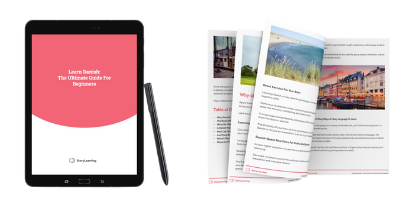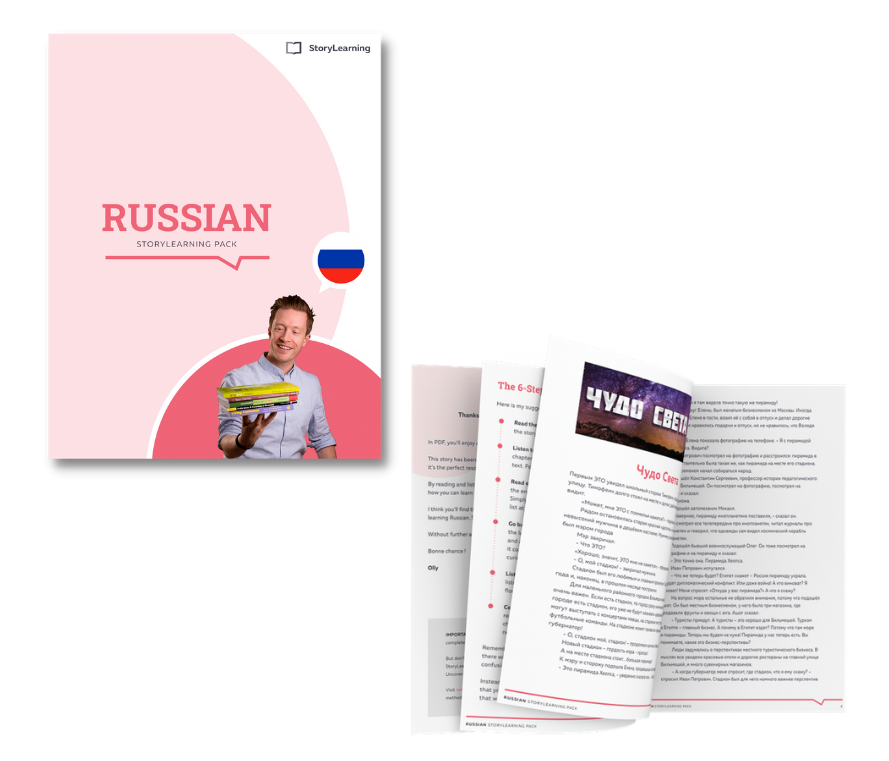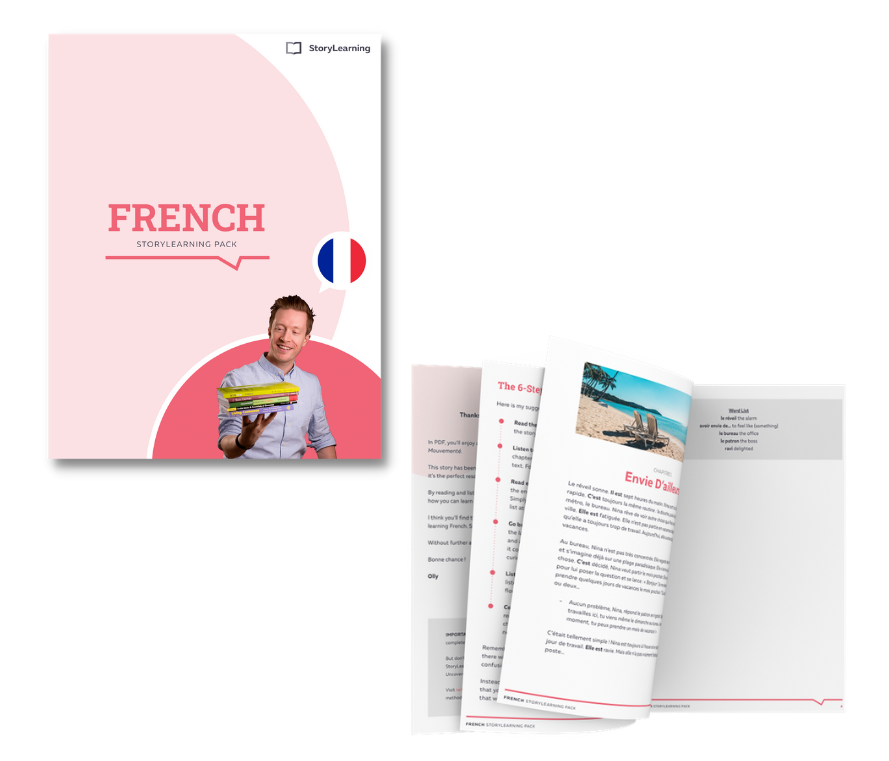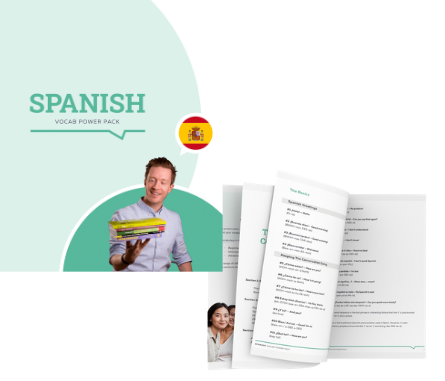When you learn Chinese, two of the main elements that spring to mind are the tones and the characters.
And these are doubtlessly aspects of the language you’ll have to tackle.
However, something else you’ll also have to confront if you want to speak even basic Chinese is measure words, one of the major grammatical features of the language.
So in this post, I have all the information you need about Chinese measure words to help you get started.
Pro Tip
By the way, if you want to learn Chinese fast and have fun, my top recommendation is Chinese Uncovered which teaches you through StoryLearning®.
With Chinese Uncovered you’ll use my unique StoryLearning® method to learn Chinese through story…not rules. It’s as fun as it is effective. If you’re ready to get started, click here for a 7-day FREE trial.
Table of Contents
What Are Measure Words?

Let’s start at the beginning – what are Chinese measure words?
Measure words – also known as “classifiers” – are words that come between numerals and nouns to “measure” or “classify” the noun.
They are a notable feature of several languages, especially Chinese along with many of the languages spoken in Southeast Asia.
English makes use of measure words in a specific and more limited way than Chinese. But looking at measure words in English can help understand the concept.
For example, when we count “grass”, we can’t say “one grass” – instead, we have to say “one blade of grass”. Here, “blade” is the measure word that allows us to count grass.
The same is true of something like “rice”. We say “three grains of rice”, with “grain” being the measure word. Another example that’s often quoted is the measure word “head” used in English for counting cattle – as in “100 head of cattle”.
These words are sometimes specific to the nouns they are used to count (like “head” for cattle), or they can be used to count a range of things with similar characteristics. For example, “grain” can also be used to count sand or salt.
In English, measure words like these are used to count non-count nouns – or in other words, nouns that have no singular or plural. For example, you can’t say “one grass” or “one sand” – you have to use a measure word to make these things countable.
However, in English, when we are talking about a count noun, a word that has singular and plural forms, we don’t need a measure word. Instead, we can just say things like “one cat” or “four tickets”.
But the big difference between Chinese and English is that in Chinese, almost all nouns (with a few exceptions that you'll see later) require a measure word between the numeral and the noun, even for count nouns.
As a result, in Chinese, you can’t say *一猫yì māo (one cat) or *四票 sì piào (four tickets). Instead, you have to say 一只猫 yì zhī māo and 四张票 sì zhāng piào, with 只 zhī and 张 zhāng being the measure words for “cat” and “ticket” respectively.
Chinese Measure Words Are Used To “Classify” Nouns

In Chinese, measure words like these don’t have any real meaning in themselves (although they may have other meanings in different grammatical contexts). Rather, they serve to “classify” the noun they are used with.
For example, 只 zhī is the measure word used for most animals, so it tells you that 猫 māo (cat) belongs to the category of “animals”.
张 zhāng, on the other hand, is the measure word for rectangular flat things, including tickets, beds and tables. So it tells you that 票 piào (ticket) belongs to the category of rectangular flat things.
Or at least that’s the theory. But another more pragmatic way to think about it is that they don’t serve any practical purpose at all other than to make the sentence correct.
You need them because without them, the sentence would be incorrect. And you have to remember which measure word goes with which noun. And essentially, that’s all you need to know!
From this explanation, it’s easy to see why these words are sometimes called “classifiers”. But some grammarians prefer to make a distinction between “measure words” and “classifiers”.
Technically, a measure word is a word like “cup” or “litre” that can be used to measure the quantity of a noun – as in “a cup/litre of water”.
These words have an inherent meaning and are common in English – and you'll discover how they work in Chinese too in just a moment.
They can also be used to measure many things. A cup isn’t specific to water and can also be used to measure coffee, sand, beads, keys or anything else you can put in a cup.
A true “classifier”, on the other hand, is a word like 只 zhī or张 zhāng that doesn’t have an inherent meaning in the sentence and is just used to classify the noun, as you’ve seen.
When studying other languages that use measure words/classifiers in this way such as Thai, the word “classifier” is normally preferred.
However, the term you’ll find in most Chinese textbooks is “measure word”.
This is partly due to convention and partly to do with the fact that in Chinese, this distinction isn’t made. In Chinese, the word for both “measure word” and “classifier” is 量词 liàngcí – which literally translates as “measure word” or “quantity word”.
As a result, in this post, I’m following standard practice and sticking to the term “measure word” except when we need to distinguish between the two types.
And in any case, measure words and classifiers behave almost identically, with just a few exceptions.

Common And Useful Chinese Measure Words
Here’s a list of common Chinese measure words that you’ll need to know. This list is far from exhaustive. But relevant measure words are listed with nouns in the popular dictionary app Pleco, so they’re easy to look up.
When it comes to learning them, all you can do is try to remember which measure word goes with which noun.
However, in practice, you can get by with relatively few common ones like 张 zhāng, 本 bĕn and 只 zhī.
You will naturally pick up more as you follow the rules of StoryLearning and read in Chinese. As you read books in Chinese, you'll come across Chinese measure words again and again.
Otherwise, knowing the groups of nouns a measure word classifies can often help you guess if you’re not sure.
Chinese Measure Words: True “Classifiers”
| Characters | Pinyin | Category | Examples |
| 张 | zhāng | Flat rectangular things | 床 chuáng (bed), 桌子 zhuōzi (table), 地图 dìtú (map) |
| 把 | bă | Things with handles, chairs (note that 把 bă can also be used as a measure word meaning a “handful” of something, see the second list below for an example) | 勺 sháo (spoon), 刀 dāo (knife), 椅子 yĭzi (chair) |
| 只 | zhī | Animals | 猫 māo (cat), 狗 gŏu (dog) |
| 头 | tóu | Livestock, garlic | 牛 niú (cow), 猪 zhū (pig), 蒜 dàsuàn (garlic – 头 tóu is used for a bulb of garlic; for a clove, the measure word is 瓣 bàn) |
| 匹 | pĭ | Horses | 马 mă (horse) |
| 支、枝 | zhī | Long, thin objects. 枝 is used for things like flowers, twigs and things with leaves – this is easy to remember because the character has the “tree” radical on the left. 支 is used for other objects with this kind of shape. It is also used for other things that don’t have any obvious connection to things shaped like this. | 笔 bĭ (pen, pencil, writing brush), 烟 yān (cigarette), 花 huā (flower), 箭 jiān (arrow), 队伍 duìwu (troops), 歌 gē (song) |
| 条 | tiáo | Long, windy things | 路 lù (street), 河 hé (river), 蛇 shé (snake), 鱼 yú (fish), 领带 lĭngdài (necktie), 裤子 kùzi (trousers, pants) |
| 本 | bĕn | Books, volumes of things | 书 shū (book), 杂志 zázhì (magazine) |
| 部 | bù | Films, machines, vehicles | 电影 diànyĭng (film, movie), 车 chē (car) |
| 首 | shŏu | Songs and poems | 歌 gē (song) |
| 件 | jiàn | Pieces, articles | 外套 wàitào (coat), 衬衫 chènshān (shirt), 行李 xíngli (luggage, suitcase) |
| 座 | zuò | Big solid things | 山 shān (mountain), 楼 lóu (building), 桥 qiáo (bridge), 电影院 diànyĭngyuàn (cinema) |
| 家 | Jiā | Families, business establishments | 饭馆 fànguăn (restaurant), 电影院 diànyĭngyuàn (cinema) |
| 间 | jiān | Rooms | 卧室 wòshì (bedroom) |
| 台 | tái | Machines | 电视 diànshì (television), 电脑 diànnăo (computer) |
| 封 | fēng | Letters | 信 xìn (letter) |
| 门 | mén | Subjects of study, languages, large guns | 语言 yŭyán (language), 大炮 dàpào (cannon, artillery piece) |
| 辆 | liàng | Wheeled vehicles | 车 chē (car, vehicle) |
| 粒 | lì | Small particles, grains | 米 mĭ (rice), 沙 shā (sand), 种子 zhŏngzi (seed) |
| 段· | duàn | Paragraphs, sections, periods of time | 时间 shíjiān (time) |
| 篇 | piān | Articles, literary works | 文章 wénzhāng (article) |
| 位 | wèi | Polite measure word for people | 人 rén (person), 朋友 péngyou (friend), 代表 dàibiăo (delegate) |
| 片 | piàn | CDs, DVDs, stretches of land, water surfaces | 湖 hú (lake), 光盘 guāngpán (CD, DVD) |
Chinese Measure Words For Measurements, Pieces Or Portions Of Things Etc.
| Characters | Pinyin | Meaning | Examples |
| 杯 | bēi | Cup, glass | 一杯酒 yì bēi jiŭ (one cup of alcohol) |
| 盒 | hé | Box | 一盒火柴 yì hé huŏchái (one box of matches) |
| 瓶 | píng | Bottle | 一瓶水 yì píng shuĭ (one bottle of water) |
| 碗 | wăn | Bowl | 一碗米饭 yì wăn mĭ fàn (one bowl of cooked rice) |
| 包 | bāo | Bag, pack | 一包烟 yì bāo yān (one packet of cigarettes) |
| 套 | tào | Set | 一套茶具 yí tào chájū (one tea set) |
| 节 | jié | Sections, lengths | 一节课 yì jié kè (one lesson), 一节管 yì jié guăn (one section of pipe) |
| 份 | fèn | Portion | 一份包子 yífèn bāozi (one portion of baozi/Chinese steamed buns) |
| 块 | kuài | Slice | 一块肉 yí kuài ròu (a slice of meat/pork) |
| 双 | shuāng | Pair | 一双鞋 yì shuāng xié (a pair of shoes) |
| 升 | shēng | Litre | 一升酱油 yì shēng jiàngyóu (one litre of soy sauce) |
| 把 | bă | Handful | 一把糖 yì bă táng (a handful of sweets/candy) |
| 斤 | jīn | 500g | 一斤米 yì jīn mĭ (500g of rice) |
| 公斤 | gōngjīn | 1kg | 一公斤米 yì gōngjīn mĭ (1kg of rice) |
| 米 | mĭ | Metre | 两米绳子 liăng mĭ shéngzi (two metres of rope) |
| 厘米 | límĭ | Centimetre | 100 厘米绳子100 límĭ shéngzi (100cm of rope) |
Using Chinese Measure Words In Simple Sentences
Once you understand that you have to place a measure word between a numeral and a noun in Chinese, using them is quite straightforward.
Here are a few examples:
- 客厅里有一张桌子、四把椅子、一条沙发和一台电视
- kètīng lĭ yŏu yì zhāng zhuōzi、sì bă yĭzi、yì tiáo shāfā hé yì tái diànshì
- In the living room, there’s a table, four chairs, a sofa and a TV
- kètīng lĭ yŏu yì zhāng zhuōzi、sì bă yĭzi、yì tiáo shāfā hé yì tái diànshì
Here, 张 zhāng, 把 bă, 条 tiáo and 台 tái are the measure words used with 桌子 zhuōzi (table), 椅子 yĭzi (chair), 沙发 shāfā (sofa) and 电视 diànshì (TV) respectively.
- 桌子上有五本书
- Zhuōzi shàng yŏu wŭ bĕn shū
- On the table, there are five books
- Zhuōzi shàng yŏu wŭ bĕn shū
Here, 本 bĕn is the measure word for 书 shū (book).
If there’s no numeral, you don’t have to use a measure word.
For example, you can say:
- 我有书
- wŏ yŏu shū
- I have a book/books
- wŏ yŏu shū
However, in Chinese, nouns are inherently plural unless otherwise stated, so the implied meaning of this sentence is “I have books” rather than “I have a book” – although it could be either.
This means if you want to insist on having “a book” or “one book”, you need to use a numeral and a measure word, like this:
- 我有一本书
- wŏ yŏu yì bĕn shū
- I have a/one book
- wŏ yŏu yì bĕn shū
The Measure Word 个 Ge

Although there are many Chinese measure words – and many nouns are associated with a specific measure word – by far the most common is 个 ge.
This measure word is used with a large number of nouns that don’t have a special measure word of their own.
For example:
- 三个人
- sān ge rén
- three people
- sān ge rén
- 十个女孩儿
- shí ge nǚháir
- ten girls
- shí ge nǚháir
- 六个星期
- liù ge xīngqī
- six weeks
- liù ge xīngqī
- 两个学校*
- liăng ge xuéxiào
- two schools
- liăng ge xuéxiào
- 我的七个学生
- wŏ de qī ge xuéshēng
- my seven students
- wŏ de qī ge xuéshēng
*Note here the use of 两 liăng. Chinese has two words for “two”, 二 èr and 两 liăng. 二 èr is the basic cardinal number, but when the number two is followed by a measure word, 两 liăng is always used. For example, it would be incorrect to say *二个学校 èr ge xuéxiào.
In normal speech, many people use 个 ge instead of a more formally correct measure word, even if they know the right one to use.
An example of this might be saying 一个饭馆 yí ge fànguăn (one/a restaurant). The correct measure word here is 家 jiā, but this is commonly used only in more careful or formal Chinese.
At the same time, you can’t do this with all nouns, and sometimes using 个 ge instead of the correct one would sound extremely strange.
For example, you will never hear a native speaker say *一个票 yí ge piào instead of using the correct measure word 张 zhāng.
Generally speaking, you should always use the most common measure words correctly, only using 个 ge to replace the less common ones.
However, in practice, it can be hard to judge, so the best way to do it is to listen to what native speakers say and take your cue from them.
Having said that, you can always use 个 ge if you don’t know or have forgotten the correct measure word because people will still understand you – even if it might sound a little odd at times.
Finally note that although 个ge is technically considered to have a falling tone, it is usually pronounced as toneless. However, when preceded by 一 yī, the 一 yī takes a rising tone just like before any other falling tone, so 一个 is pronounced yí ge.
Some Nouns Can Have More Than One Measure Word

Something else worth noting is that while many words don’t have a specific measure word and just take 个 ge, others may have more than one.
For example, the word 车 chē (car, vehicle) can take either辆 liàng or 部 bù as its measure word, and 画 huà (painting) can take either 张 zhāng or 幅 fú.
房子 fángzi (house, apartment) has several: 座 zuò, 所 suŏ, 幢 zhuàng or 栋 dòng can all be used – along with 个 ge, which is also commonly heard.
Chinese Measure Words: Particular Cases
With Ordinal Numbers
When it comes to ordinal numbers (first, second, third etc.), the same rule that a measure word needs to be used between the numeral and the noun still applies.
To make an ordinal number in Chinese, you simply add 第 dì before the cardinal number, so 第一 dì yī is “first”, 第二 dì èr is “second”, 第三 dì sān is “third” and so on.
Here are some examples of ordinal numbers with measure words:
- 我的第一个中国朋友
- wŏ de dì yī ge zhōngguó péngyŏu
- My first Chinese friend
- wŏ de dì yī ge zhōngguó péngyŏu
- 第三个菜
- dì sān ge cài
- The third dish
- dì sān ge cài
(盘 pán and 道 dào are technically the correct measure words for 菜 cài (dish), but using 个 ge here in normal speech is far more natural.)
Note that the tone rules for 一个 yí ge don’t apply here – the tones for 第一个 are always dì yī ge.
Using Chinese Measure Words To Stand For The Noun

In English, if you were buying apples, you might say to the fruit seller “give me four apples”. But you might also just say “give me four” because you both know that you are talking about apples.
In Chinese, you can do something similar, but while you can drop the noun you are talking about, you have to keep the measure word. So the measure word essentially stands in for the noun.
Here’s how it works:
- 给我四个苹果
- gĕi wŏ sì ge píngguŏ
- give me four apples
- gĕi wŏ sì ge píngguŏ
- 给我四个
- gĕi wŏ sì ge
- give me four
- gĕi wŏ sì ge
Here’s another example:
- 两张去厦门的票
- liăng zhāng qù xiàmén de piào
- two tickets to Xiamen
- liăng zhāng qù xiàmén de piào
- 两张去厦门的
- liăng zhāng qù xiàmén de
- two to Xiamen
- liăng zhāng qù xiàmén de
- 两张
- liăng zhāng
- two
- liăng zhāng
In the first sentence, 张 zhāng is the measure word that goes with 票 piào (ticket), and 去厦门的 qù xiàmén de means “to Xiamen”.
However, in the second version, we know we are talking about tickets, so we don’t need to say it. Here, the measure word 张 is allowed to stand for the noun.
Finally, in the third sentence, all the other information is understood by the buyer and the seller, so all the person needs to say is the number followed by the measure word.
Chinese Measure Words With 这 Zhè,那 Nà, 哪 Nă, 几 Jĭ, 上 Shàng &下 Xià
As well as being used between numerals and nouns, measure words are also required after 这 zhè (this), 那 nà (that), 哪 nă (which?) and 几 jĭ (how many?).
Here are some examples:
- 这本书
- zhè bĕn shū
- this book
- zhè bĕn shū
- 这三本词典
- zhè sān bĕn cídiăn
- these three dictionaries
- zhè sān bĕn cídiăn
- 你认识那个人吗?
- nĭ rènshi nà ge rén ma?
- do you know that person?
- nĭ rènshi nà ge rén ma?
- 哪个人?
- nă ge rén?
- which person?
- nă ge rén?
- 几条蛇?
- jĭ tiáo shé?
- how many snakes? (条 tiáo is the measure word for long, narrow or thin objects, including snakes and fish)
- jĭ tiáo shé?
这 zhè, 那 nà and 哪 nă can also be followed by 些 xiē, a word that works like a measure word and gives the idea of there being “several” or “a few” of the following noun.
For example:
- 这些人
- zhè xiē rén
- these (several) people
- zhè xiē rén
When using 上 shàng and 下 xià to mean “last” and “next” respectively, a measure word is also needed before the noun:
- 上个月
- shàng ge yuè
- last month
- shàng ge yuè
- 下个星期
- xià ge xīngqī
- next week
- xià ge xīngqī
Words That Don’t Take Chinese Measure Words
Finally, there are a few nouns that don’t take measure words. For example, 天 tiān (day) and 年 nián (year) are used without measure words:
- 三天以后
- sān tiān yĭhòu
- three days later/in three days
- sān tiān yĭhòu
- 四年以前
- sì nián yĭqián
- three days ago/three days before
- sì nián yĭqián
There are not many of these, and you’ll get to know them as you study.
Sometimes, measure words are not always used with certain words, according to the context.
For example, it’s normal to say 下一站 xià yī zhàn (the next station/stop) or 坐两站 zuò liăng zhàn (ride [the bus] for two stops) – but you would normally say 一个火车站 yí ge huŏchē zhàn (one/a train station).
Containers, Units Of Measurement, Pieces Of Things

As well as Chinese measure words used to classify nouns (the ones that can technically be called “classifiers”), Chinese also has a full range of measure words that can be used to measure quantities of things or count pieces of things.
Here are some examples:
- 两碗米饭
- liăng wăn mĭ fàn
- two bowls of (cooked) rice
- liăng wăn mĭ fàn
- 三杯咖啡
- sān bēi kāfēi
- three cups of coffee
- sān bēi kāfēi
- 五杯啤酒
- wŭ bēi píjiŭ
- five glasses of beer
- wŭ bēi píjiŭ
- 六瓶啤酒
- liù píng píjiŭ
- five bottles of beer
- liù píng píjiŭ
- 一升水
- yì shēng shuĭ
- one litre of water
- yì shēng shuĭ
- 十斤茶叶
- shí jīn cháyè
- 5kg of tea leaves (1 “jin” = 500g, so 10 “jin” = 5kg)
- shí jīn cháyè
- 三块蛋糕
- sān kuài dàngāo
- three slices of cake
- sān kuài dàngāo
- 两份饺子
- liăng fèn jiăozi
- two portions of jiaozi (dumplings)
- liăng fèn jiăozi
- 一双筷子
- yì shuāng kuàizi
- a pair of chopsticks
- yì shuāng kuàizi
- 一群鸟
- yì qún niăo
- a flock of birds
- yì qún niăo
- 一群人
- yì qún rén
- a group of people
- yì qún rén
There are a couple of points to note here.
First, not all of these measure words match precisely with their English counterparts, so, for example, 杯 bēi can mean either a “cup” or a “glass” of something.
Similarly, the measure word 群 qún can be used to mean “flock”, “group”, “herd”, “pack” or anything similar, depending on the context.
With measure words like this, it is also possible to modify them with an adjective, which comes before the measure word, as in 一大瓶啤酒 yí dà píng píjiŭ (a large bottle of beer).
This is in contrast with true “classifiers”, which can’t be used like this.
For example, you can’t say *一大个人 yí dà ge rén to mean “a big person”. Instead, you have to say 一个大人 yí ge dà rén.
Measure Word For Slices & Money: 块 kuài
Finally, the measure word 块 kuài is the word for a slice of anything, like cakes, pizza, meat and so on.
It is also the measure word for money, so when giving prices, the full version would be, for example, 100块钱 100 kuài qián. In practice, people almost always omit 钱 qián (money) and just say 100 块 100 kuài.
This has led to many foreigners in China also using “kuai” for Chinese currency when speaking English in the same way as you would say 100 pounds, euros or dollars. Technically, this doesn’t make grammatical sense in English, but the practice is extremely common.
Incidentally, the word 元 yuán is another measure word for money, and although the rest of the world uses this word for the Chinese currency, this is also arguably technically incorrect in the same way as using kuai is in English.
The Chinese word for the Chinese currency is 人民币 rénmínbì, or RMB for short. So if you want to be pedantically correct when speaking about Chinese money, the best way to say it in English would be “100 RMB” or “100 renminbi”!

Chinese Measure Words FAQ
What is a measure word used for Chinese?
In Chinese, measure words (also called classifiers) are essential for counting and specifying nouns. One common example is 个 (gè), which is a versatile measure word used for many objects and people.
Why do Chinese have counter words?
Chinese uses counter words to provide grammatical structure and clarify the noun being discussed.
Unlike in English, where a noun can be directly counted, Chinese requires a measure word between the number and the noun for specificity and grammatical correctness.
Why should you learn Chinese measure words?
Learning measure words is crucial for sounding natural and fluent in Chinese. They are necessary for counting, describing quantities, and forming grammatically correct sentences in both spoken and written Chinese.
What is an example of a measure word?
An example of a measure word is 本 (běn), used specifically for books and similar bound items. For example, 一本书 (yī běn shū) means “one book.”
Chinese Measure Words: Important To Understand But Not Hard To Use
The extensive use of measure words is one of the distinguishing features of the Chinese language.
And they’re something you’ll have to be able to master if you want to be able to speak Chinese to any level.
However, they’re not difficult to learn, and you can get started with only a few of the most basic ones. Then, with practice, you’ll find you pick up more naturally just through exposure to the language.

Olly Richards
Creator of the StoryLearning® Method
Olly Richards is a renowned polyglot and language learning expert with over 15 years of experience teaching millions through his innovative StoryLearning® method. He is the creator of StoryLearning, one of the world's largest language learning blogs with 500,000+ monthly readers.
Olly has authored 30+ language learning books and courses, including the bestselling "Short Stories" series published by Teach Yourself.
When not developing new teaching methods, Richards practices what he preaches—he speaks 8 languages fluently and continues learning new ones through his own methodology.










































